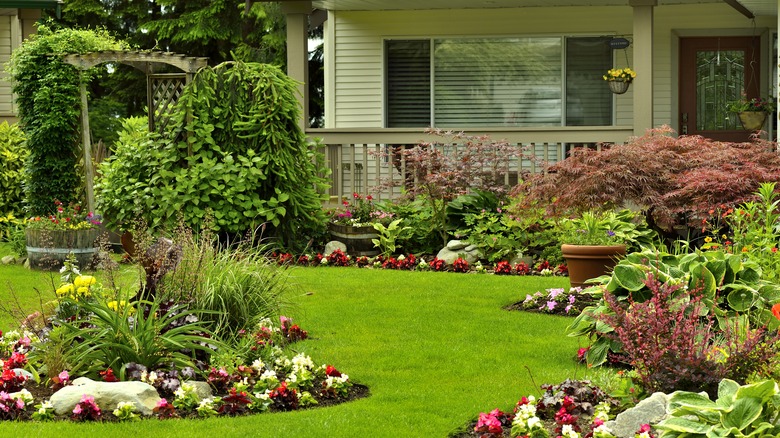Suppress Weeds & Attract Pollinators This Summer With A Colorful Living Mulch
When you hear the word mulch, the first thing that comes to mind may be shredded hardwood, and while that is a great option, it's far from the only choice. Anything that covers the soil, suppressing weeds and preventing erosion, can be a mulch. In fact, one of the best mulches is other plants! Using low-growing annuals, especially flowering varieties that bloom all summer, as a living mulch not only prevents weeds but can also attract pollinators and beneficial insects.
While there are many low-growing perennials that also make excellent mulches, including creeping phlox, a popular flowering ground cover that hummingbirds love, one of the fun things about annuals is that they're low commitment, allowing you to choose different colors and species each year. Another advantage is that unlike perennials, which grow much more slowly and often take three years to mature, annuals grow and flower far faster, thanks to their shorter life spans. Whether you replant your living mulch of annuals yearly or just use them for a year or two while waiting for slower-growing perennial plants to fill in, there are annuals for almost every growing zone and color palette, including varieties of Lobelia, petunias, and Nemesia.
The best pollinator attracting annuals for living mulches
Sweet alyssums (Lobularia maritima) are one of the most beloved bedding annuals, thanks not only to their colors and dainty blooms but also their ability to attract beneficial predatory insects, butterflies, and bees. Easily available as both plants and seeds, sweet alyssums quickly reach their full height of 3 to 9 inches and flower all season long. Available in white, pink, and purple, they're the perfect option for full sun or part shade locations in zones 5 through 9.
Gardeners struggling with good annuals for drier areas should consider low-growing zinnias and annual phlox (Phlox drummondii). Zinnias like the Profusion and Zahara series (Z. elegans x Z. angustifolia) stay under a foot tall, as do most annual phlox varieties. While zinnias can thrive all summer in zones 3 through 10 in full sun conditions, phlox has an even wider range, growing well in zones 2 through 11, and they are able to tolerate partial shade as well as direct sunlight. Both species are magnets for bees, butterflies, and hummingbirds. Alyssums, zinnias, and phlox are far from the only annuals that make good living mulches, so don't be afraid to experiment with other low-growing flowers too. After all, part of the fun of annuals is that they aren't permanent.

